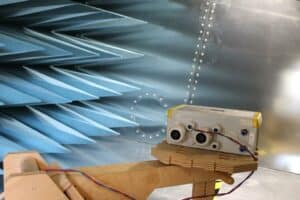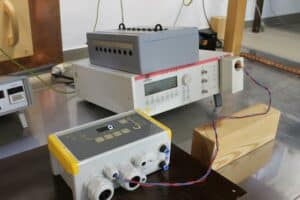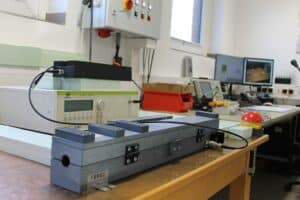Appointments at short notice
Favourable hourly rates
Shorter measuring times
Faster to market with EMC testing during development
In HESCH’s own EMC laboratory, we offer you comprehensive EMC tests according to certified specifications. We analyze whether the EMC measurements of your prototype meet the requirements. You will then receive a detailed test report on the electromagnetic compatibility (EMC).
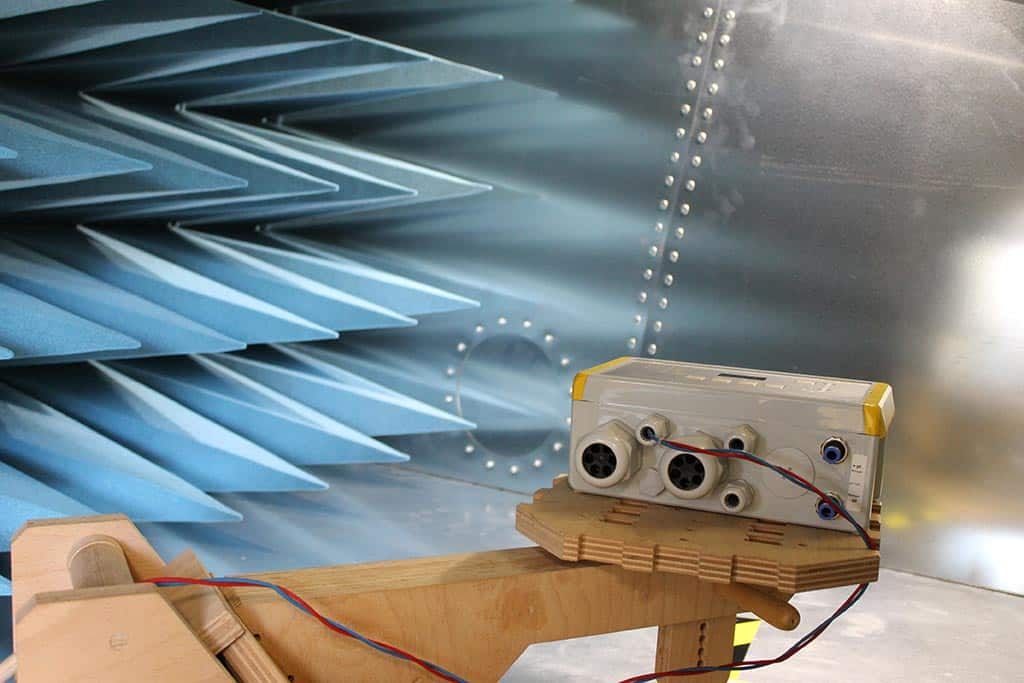
accelerate market maturity
Before electrical or electronic systems and devices are ready for the market, they must be tested for interfering electrical or electromagnetic effects. Only after passing an EMC test by an accredited laboratory, which can be time-consuming and cost-intensive, do they reach market maturity. If this process takes place during development, market readiness is achieved more quickly.
prevent delays
Early EMC tests of prototypes with regard to their immunity to interference and emitted interference can prevent unpleasant surprises during later compliance measurements. This is a good reason to use an EMC test already in the development phase, because it provides important findings for circuit and software optimization and can save a lot of time and money.
Take advantage of the benefits:
Have your DUT tested in our EMC laboratory during development before presenting it to the accredited laboratory for final acceptance.
We offer the following measurement methods:
Conducted measurement methods
Interference immunity
-
- EN 61000-4-2: Immunity to Electrostatic Discharge (ESD)
- EN 61000-4-4: Interference immunity against pulse groups (burst)
- EN 61000-4-5: Interference resistance against surge voltages 1.2/50 µs (Surge)
- EN 61000-4-6: Immunity to high-frequency interference voltages from 9 kHz – 240 MHz (HF)
- EN 61000-4-11: Immunity to voltage variations and short interruptions in power supply systems
Radiated measurement methods
Interference emission
-
- EN 55016-2-1: Measurement of conducted interference voltage
The HESCH EMC Laboratory
In our EMC test laboratory, the electromagnetic compatibility (EMC) of your electronic device is tested. EMC describes the ability of the equipment not to cause unwanted and unacceptable interference with other equipment or devices in the environment and to operate satisfactorily itself.
The well-equipped laboratory carries out classification measurements based, among other things, on the basic EN 61000-6 standards for industrial (2 + 4) and residential (1 + 3) environments. It is located in the Boschstr. 8, 31535 Neustadt am Rübenberge (Hanover region)
| Leistungsdaten unseres Labors |
|---|
| ESD: bis 16 kV Luftentladung |
| EMF*: bis 20 V/m |
| Burst: bis 8 kV |
| Surge: bis 4 kV |
| HF: bis 20 V |
| * in GTEM-Zelle |
| Prüflingsdaten für Messungen in der GTEM-Zelle |
|---|
| Gleich- und Wechselspannung: 230 V AC, 1 × 16 A |
| Definiertes Testvolumen: 25 × 25 × 25 cm |
| Maximale Prüflingsgröße: 60 × 60 × 37,5 cm |
| Tür: 60 × 60 cm |
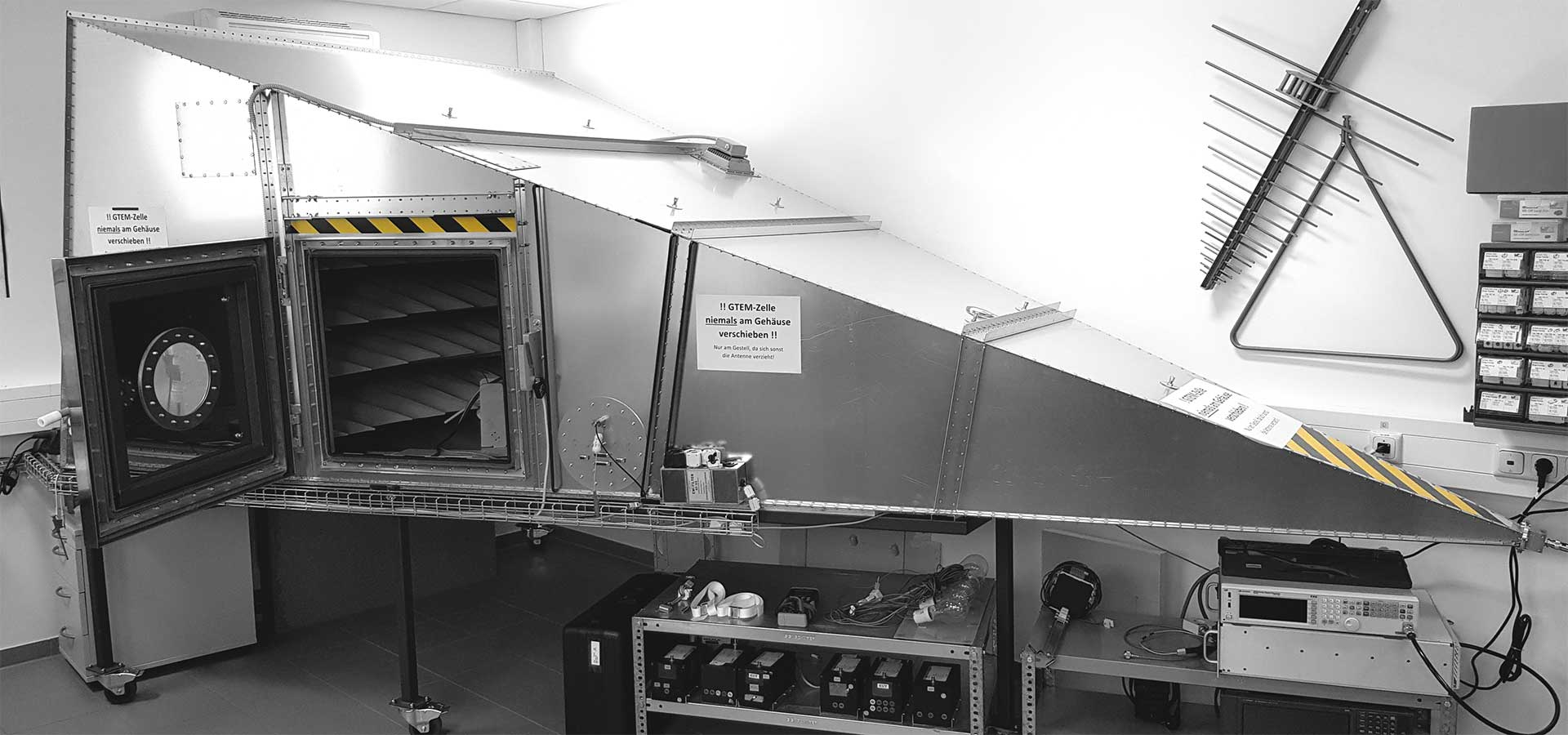
What does GTEM cell mean?
The abbreviation GTEM stands for Gigahertz Transverse Electro-Magnetic and refers to a completely enclosed and externally shielded measuring chamber in a pyramid-like shape. The GTEM cell is used for radiated immunity/radiated emission measurements according to IEC 61000-4-20. A measurement of the interference immunity or interference emission takes considerably less time in a GTEM cell (30 min) than a measurement in an anechoic chamber (approx. 2 h) and is therefore already used at HESCH during product development.
In GTEM cells, measurements can be made from 0 Hz up to several GHz. Thus, the device under test is tested for compliance with the EMC limits in a wide frequency spectrum. External effects are excluded because the GTEM cell is completely electromagnetically decoupled from the environment.
We are happy to support you with our many years of experience in the development phase of your test specimen.
We are your partner for fast EMC inspections, measurements and tests.
You are looking for a specialist in the field of
Electronics development
?
We are happy to help you!
